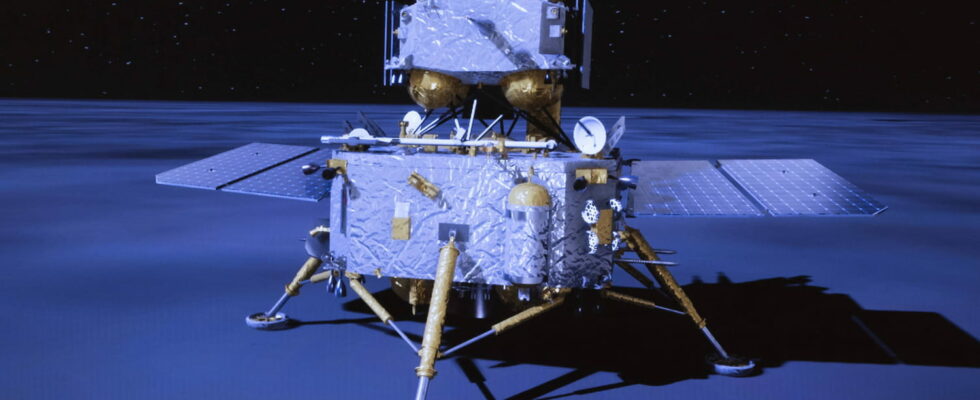The Chinese Chang’e 6 lander landed on the far side of the Moon with a French scientific instrument on board.
If Thomas Pesquet is still waiting to know if he will be part of the American program which aims to return astronauts to the Moon, France is not absent from the lunar soil. She has even been officially represented there for a few days. A month after taking off from the Wenchang base, located on the island of Hainan in southern China, the Chang’e 6 probe landed on the far side of the Moon on the night of Saturday 1er to Sunday June 2 at 12:23 a.m. (French time). This ambitious Chinese mission which aims to bring back the first samples from the far side of the Moon carries with it a French scientific instrument designed by the Institute for Research in Astrophysics and Planetology (IRAP) in Toulouse.
In addition to Chinese equipment, the Chang’e 6 probe also carried with it several instruments belonging to different countries. Thus, Pakistan, Sweden and Italy were able to take advantage of the spacecraft to deposit scientific tools on the Moon which will be used to take measurements or prepare future missions. For its part, France was able to take on board a spectrometer called Dorn responsible for measuring radon, a gas present on the surface of the Moon.

For this, the device is equipped with eight sensors which allow it to detect the presence of radon in the thin layer of gas which surrounds our natural satellite. This mission therefore marks the return to the Moon of France, which had already installed laser reflectors on the lunar surface in 1970 and 1973 thanks to the Soviet Lunokhod 1 and Lunokhod 2 landers. This is also a great first for our country. since Dorn constitutes the first “active” French scientific instrument placed on the Moon.
Installed in its lunar crater, the Chang’e 6 probe must now take samples for two days. Using its drill and robotic arm, Chang’e 6 will dig holes up to two meters deep in the ground to extract rocks which will subsequently be analyzed. The mission of the Chang’e 6 probe must last a total of 53 days between its takeoff and the arrival of the precious cargo which should take place on June 25 in Mongolia. The capsule is expected to land in the Siziwang Banner, a region commonly used for Chinese spaceflight return.
Housed in the heart of the Apollo crater, one of the largest known craters in the solar system, the Chang’e 6 probe did not land by chance on the far side of the Moon. Still little explored, this region is particularly interesting from a scientific point of view. Indeed, it is home to large craters in which the lunar crust is very thin, which provides easy access to the rocks of the “mantle”, the layer located just below. If the Chinese mission is a success, it will be the first time that samples from the far side of the Moon have been brought back to Earth. The opportunity for China to catch up some of its delay on the United States and Russia in terms of space exploration.
